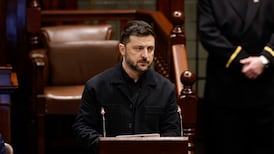This summer marks the centenary of the announcement by minister for education Eoin MacNeill that the teaching of Irish would be made compulsory in all schools. Identifying the schools as the driver of the language was seen as part of the state-building mission, but it was also ironic given MacNeill’s long-expressed scepticism that schools could or should be the mainstay of linguistic revitalisation.
MacNeill, a leading Gaelic scholar and historian, was adamant in 1893, the year he cofounded Conradh na Gaeilge (the Gaelic League), that “no language has ever been kept alive by mere book-teaching”.
Ten years later MacNeill drafted a letter to the leading Irish-language scholar Fr Peadar Ó Laoghaire: “The fruit of all the anxious thought about saving the Irish language seems to be nothing but a cry for schools [and] teachers. Can a language be saved by schools? Do we realise what a language means?” Not even the most brilliant teachers, he insisted, could make the proper use of language “an adhering reality in the minds of little boys and girls or of adults”.
In 1924, as minister, he expanded on this view: “you might as well be putting wooden legs on hens as trying to restore Irish through the school system”; the same year, he estimated that only about a third of primary-school teachers were competent to oversee compulsory Irish in their sector, official policy since 1922.
READ MORE
As MacNeill saw it, much depended on the preservation of the Gaeltacht areas as “reservoirs of Gaelic from which the language may generally flow out organically to the surrounding districts” but he reiterated that education policy alone could not achieve language restoration and widespread use. The recommendations of the 1926 Gaeltacht commission to harness the potential of the Irish-speaking areas did not translate into sufficiently concrete action or robust state intervention, stymied by social and economic conservatism, excessive centralisation and lack of political will.

The peak of teaching through Irish, fully or partially, was reached in the early 1940s when about 55 per cent of primary and secondary schools combined were using Irish as the medium of instruction. This was not unimpressive, but the extent to which students would put their Irish to use outside the schools remained questionable, especially given that such a minuscule amount of “official” business of the State was conducted through Irish.
The issue of “compulsory” Irish remained contentious and became fraught in the 1960s and 1970s, paralleled with a retreat by the State. A fightback had much to do with the doggedness of Conradh na Gaeilge and other grassroots organisations through lobbying and pressure. Various new attempts at regeneration in the long run bore some fruit, reflected in recent developments such as Irish-language media, a statutory framework for the provision of public services through Irish, planning authorities required to protect the linguistic and cultural heritage of the Gaeltacht and recognition of Irish as an official language of the EU. There was still a sense, however, that this was a niche affair. As historian Gearóid Ó Tuathaigh observed in 2008, “while there is scarcely an aspect of the world-experience of contemporary Irish people that one cannot find discussed in the Irish-language media ... nowhere among the widely dispersed community of real (and aspiring) Irish-speakers throughout Ireland has a self-sustaining urban community been established in which Irish runs uninterrupted through the main communications arteries of that community”. What was required was the creation of “the kind of credible acoustic reality of Irish, that would affirm the young in a language reflex favourable to using Irish, or that would ensure that the stranger, newcomer or language-learner would accept the normalcy of linguistic conformity in the interests of living ‘the full life’ in such a community”.
There are positives. In addition to the 13,000 primary and secondary students being educated through Irish in the Gaeltacht, more than 50,000 students, north and south, now attend schools that are primarily Irish language. Historian Joseph EA Connell has recently argued in History Ireland magazine that such success “is due to effective community support and an efficient administrative infrastructure”. The Gaelscoileanna “are distinguished by being the product not of state policy but of a genuine community movement.”
Language rights in Northern Ireland inevitably carried even more of a charge. The subversive, captivating and very funny film Kneecap, the fictionalised story of the west Belfast hip-hop trio, rapping in Irish and English, is currently making waves. Kneecap’s mischief might poke at age-old sores, as they take the patronising label of “ceasefire babies” (to describe those born in the late 1990s in the North, as if their lives would be a breeze) and give it a kicking, but they may well achieve much for the Irish language by proving the veracity of the assertions of their unlikely bedfellow, Eoin MacNeill.














